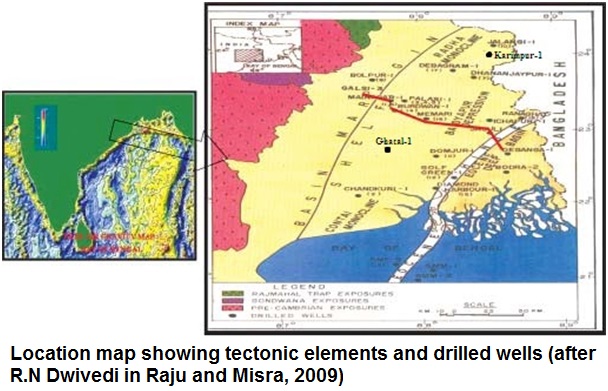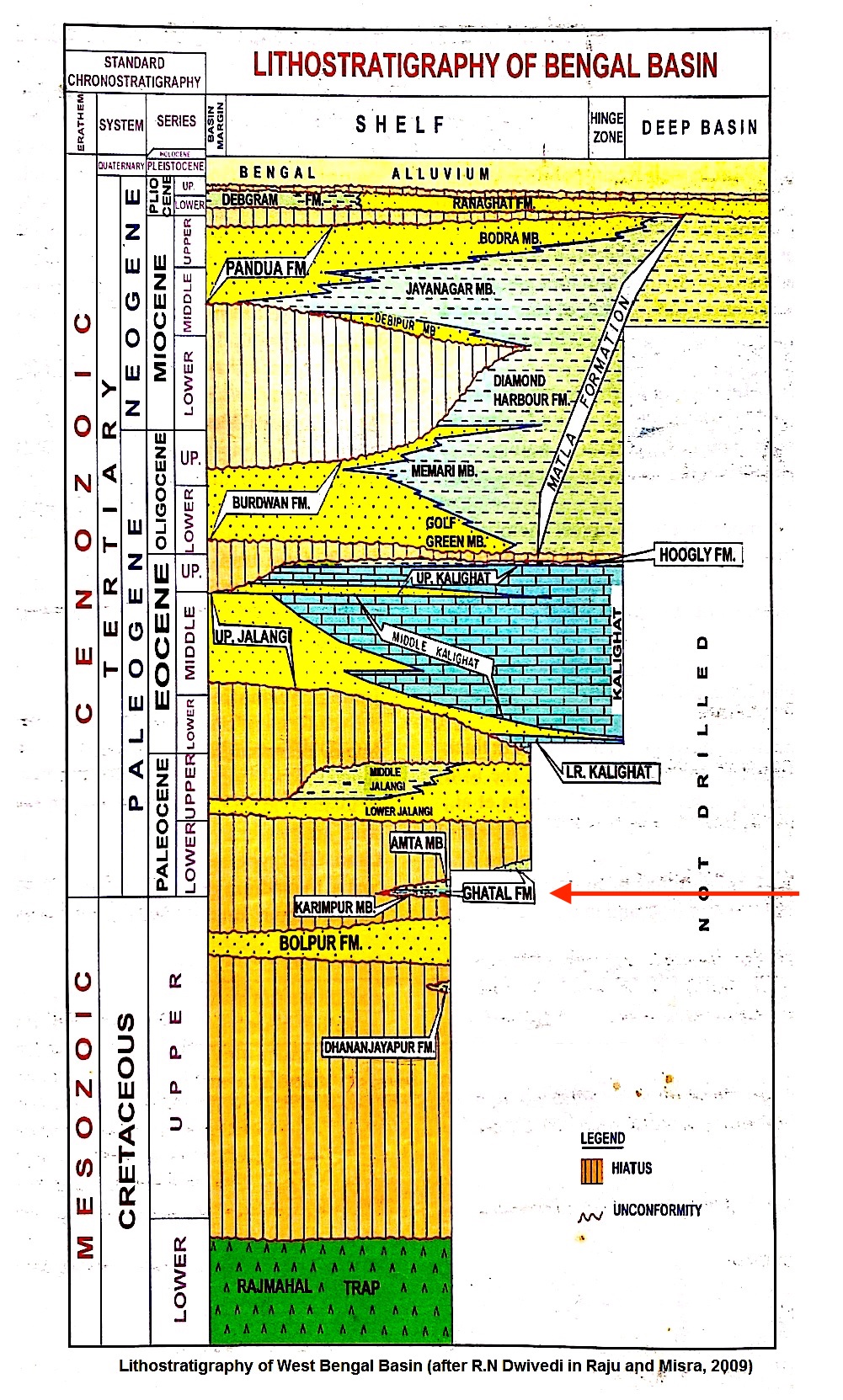Ghatal Fm
Type Locality and Naming
Type section is in the well Ghatal-1, Interval is 2802-2971 m and thickness is 169 m. [Original Publication: Biswas et al., (1963) Results of exploration for Petroleum in the Western part of Bengal Basin, India. Proc. 2nd Symp. Dev. Petrol Res. ECAFE Mins. Res. DeVol. Ser No. 18, pt 1, pp. 241-250.]
Reference well: Well Karimpur-1, Interval is 3527-3592 m, and thickness is around 335 m (Chandra et al., 1991). Refer figure under type well location map.
[Figure 1: Location map showing tectonic elements and drilled wells (after R.N Dwivedi in Raju and Misra, 2009)]
Lithology and Thickness
Fine-grained sandstone. In the type section, the formation is represented by fine to very fine-grained calcareous sandstone, carbonaceous or calcareous shale, dark grey to brownish-grey siltstone and oolites. Rare shell fragments are also present. This formation shows gradual increase in thickness towards east. Maximum thickness is observed in the well Karimpur-1, where it is around 335 m (Chandra et al., 1991).
MEMBER(S) – The Ghatal Formation is subdivided into four members:
Karimpur Member: The oldest member is comprised of fine-grained sandstone alteration with buff or white limestone and shale.
Mayapur Member: This is characterized by carbonaceous, calcareous shale and siltstone with occasional oolites, overlain by oolites.
Amta Member: This is represented by a thin, grey shale sequence.
Domjur Member: It is the youngest member of Ghatal Formation overlying Amta Member. It is characterized by fine-grained sandstone, calcareous siltstone and grey shale.
[Figure 1: West Bengal Basin lithostratigraphy (after R.N. Dwivedi in Raju and Misra, 2009) with red-arrow showing position of this formation]
Relationships and Distribution
Lower contact
Lower boundary is unconformable with the Bolpur Fm.
Upper contact
Upper boundary is unconformable with the Jalangi Fm (West Bengal) and, as sometimes used in NW Bangladesh is overlain by Chera Fm.
Regional extent
The formation has been encountered in Chandukuri-1, Ghatal-1, Domjur-1 and in wells drilled in Dhananjaypur-Karimpur and Jalangi area. Largely coeval with Chera Fm (NW Bangladesh) and Tura Fm (NE Basins and Bangladesh).
GeoJSON
Fossils
The Ghatal Formation has yielded a few planktonic foraminifera in Dhananjayapur-1, Domjur-1 and Chandkuri-1 including Trinidadensis, Globorotalia (T) inconstans.
Age
Depositional setting
The formation represents a transgressive – regressive sequence. Its lower Karimapur and Mayapur members are transgressive deltaic deposits. The Amta Member includes pre-delta shales of a regressive delta. The youngest Domjur Member is regressive represented in the well Domjur-1 by fine to very fine sandstones.
[Figure: Environments of Deposition of West Bengal Basin (from dghindia.gov.in)]
Additional Information


